Tom's Hardware Verdict
Overall the AMD 4700S Desktop Kit requires too many extreme tradeoffs, with little to no upgrade path for the CPU, memory, GPU, cooler, and storage. With high pricing and poor gaming performance, the AMD 4700S isn't competitive with other options.
Pros
- +
+ Available in some regions during chip shortages
- +
+ Ample USB connectivity
Cons
- -
High price
- -
PCIe 2.0 hamstrings gaming
- -
Low single-threaded performance
- -
Memory/chip/cooler not upgradeable
- -
Low-end GPU only
- -
Limited storage connectivity, no M.2
- -
Insufficient stock cooler (loud/hot)
Why you can trust Tom's Hardware
We have AMD's 4700S Desktop Kit, a motherboard that almost certainly houses a defective version of the chip typically found in the Sony PlayStation 5, in for testing. This kit definitely isn't a typical AMD product: The eight-core 16-thread Zen 2 'AMD 4700S' chip has a 3.6 GHz base and 4.0 GHz boost, but it comes directly mounted onto a mini-ITX motherboard along with either 8 or 16GB of graphics memory (not standard DRAM) and a cooler, while the chip's custom integrated GPU with 36 RDNA2-based compute units (CUs) is disabled. That means the chip's ability to compete with the best CPUs for gaming, and its position on our CPU Benchmark hierarchy, rests on its ability to push a discrete GPU to high levels of performance. Today we'll put the chip through its paces in a full spate of tests, including gaming and applications.
How did such an odd product come to market? At last count, Sony has sold more than 10 million PS5 consoles, each with its own special custom 'Oberon' chip designed by AMD. These custom chips come with eight Zen 2 cores and a powerful custom RDNA graphics engine, but an untold number of chips suffer from defects during the manufacturing processes, meaning that they won't function correctly (if at all), typically resulting in a trip to the trash bin. Sometimes the chips simply can't meet certain clock speed criteria. Regardless of the issue with these chips, they can't be used in a console, but AMD appears to have found a way to sell the defective silicon by creating a system board with most of the key components you need to craft small systems.
| CPU | Arch. | Price | Cores/ Threads | Base/ Boost Freq. | TDP | GPU Cores | GPU Freq. (MHz) | L3 (MB) |
| AMD 4700S | Zen 2 | $400 w/ board and memory (est.) | 8 / 16 | 3.6 / 4.0 | 75W | N/A | N/A | 8 |
| Ryzen 7 5700G | Zen 3 | $359 | 8 / 16 | 3.8 / 4.6 | 65W | RX Vega 8 | 2000 | 16 |
| Ryzen 5 5600G | Zen 3 | $259 | 6 / 12 | 3.9 / 4.4 | 65W | RX Vega 7 | 1900 | 16 |
| Ryzen 7 4750G | Zen 2 | ~$310 | 8 / 16 | 3.6 / 4.4 | 65W | RX Vega 8 | 2100 | 8 |
AMD certainly isn't known for selling nearly-complete systems, but it's necessary for the 4700S Desktop Kit because AMD fused the custom 75W AMD 4700S chip and eight GDDR6 memory packages to the motherboard with BGA mounting.
GDDR6 may seem to be an odd addition — we typically see this type of memory used for GPUs — but the 4700S uses GDDR6 as main memory instead of the standard DRAM we're accustomed to. This type of memory provides higher bandwidth than standard DRAM, but that comes at the cost of higher latency. While GPUs crave this higher bandwidth and aren't as sensitive to latency, GDDR6 does have performance implications in latency-sensitive workloads that run on CPUs, like gaming. In addition, the chip only exposes a single PCIe 2.0 x4 interface for the user to connect PCIe devices, ultimately restricting GPU performance. It also has extremely limited I/O connectivity with only two SATA ports for storage devices.
Almost all the details about AMD's 4700S kit for desktop PCs had come via product listings and leaks before AMD even listed the chip on its site, and the company launched the AMD 4700S without any of its normal communication with the press via briefings or press releases. AMD also didn't release the specifications for the chip, like clock speeds, cache, and TDPs, until after we requested them several months after the systems began shipping.
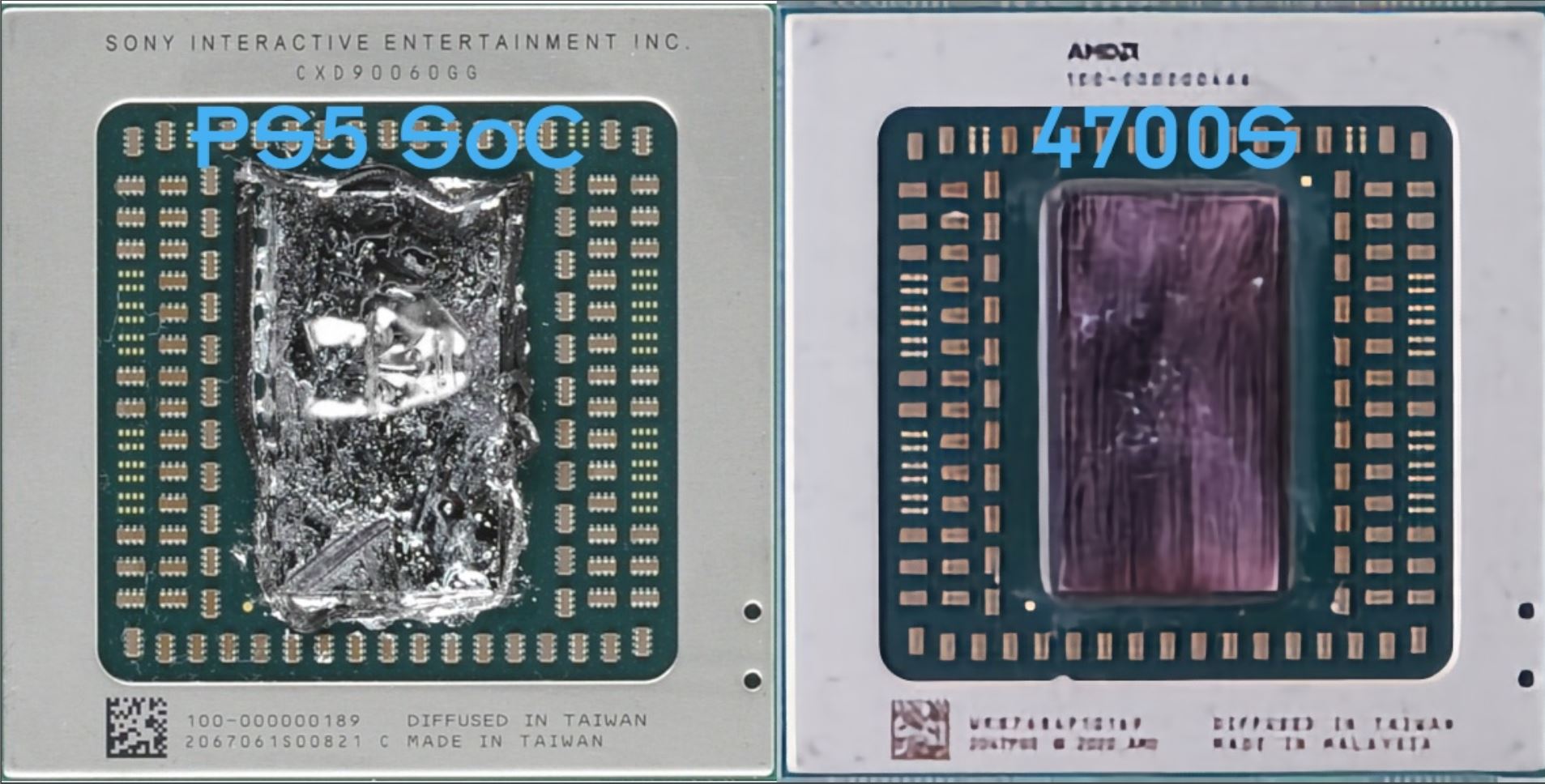
AMD has declined to comment on whether or not the AMD 4700S chip consists of defective PS5 silicon, but the identical chip packaging and completely unique system requirements (like GDDR6) make it clear. AMD has also conspicuously avoided using Ryzen branding.
AMD hasn't engaged in the usual level of support for the chip with independent software vendors (ISVs), so most common monitoring utilities can't give accurate monitoring information, including for some basic parameters like clock speeds. AMD's own Ryzen Master doesn't support the chip, either. All of this combines to make this system, in many respects, a black box.
| Processor | AMD 4700S 8-Core Processor “Zen 2” architecture |
| Memory | 8GB or 16GB GDDR6 |
| PCIe Slots | One PCIe 2.0 x4 |
| FCH | FCH AMD A77E Fusion Controller Hub |
| LAN | Asix AX88179 Gigabit Ethernet controller |
| Audio codec | Realtek ALC897 |
| Internal connections | 2x SATA 6Gb/s connectors — 1x USB3.2 Gen1 5Gbps connector — 1x Front panel audio connector |
| External I/O | 4x USB2.0 — 3x USB3.2 Gen2 — 1x LAN — 1x USB3.2 Gen1 3x audio jacks |
| Warranty | Two years |
What do we know? We know that AMD positions the Ryzen 4700S Desktop Kit as a "high-performance productivity" solution for mainstream, home office, small business, and enterprise uses. That means it's suited for tasks like productivity, multi-tasking, and light 3D workloads. AMD sells the kit either to system integrators (SI), who then create full systems with the unit (over 80 designs are coming to market), or as a boxed item. Systems based on this kit were first available in China, but both systems and standalone kits have now filtered out to Europe. However, AMD hasn't said if systems will be available in the US.
You'll notice that AMD specifically doesn't position the 4700S Desktop Kit for gaming systems. You'll soon see why.
The Overall Benchmark TLDR:
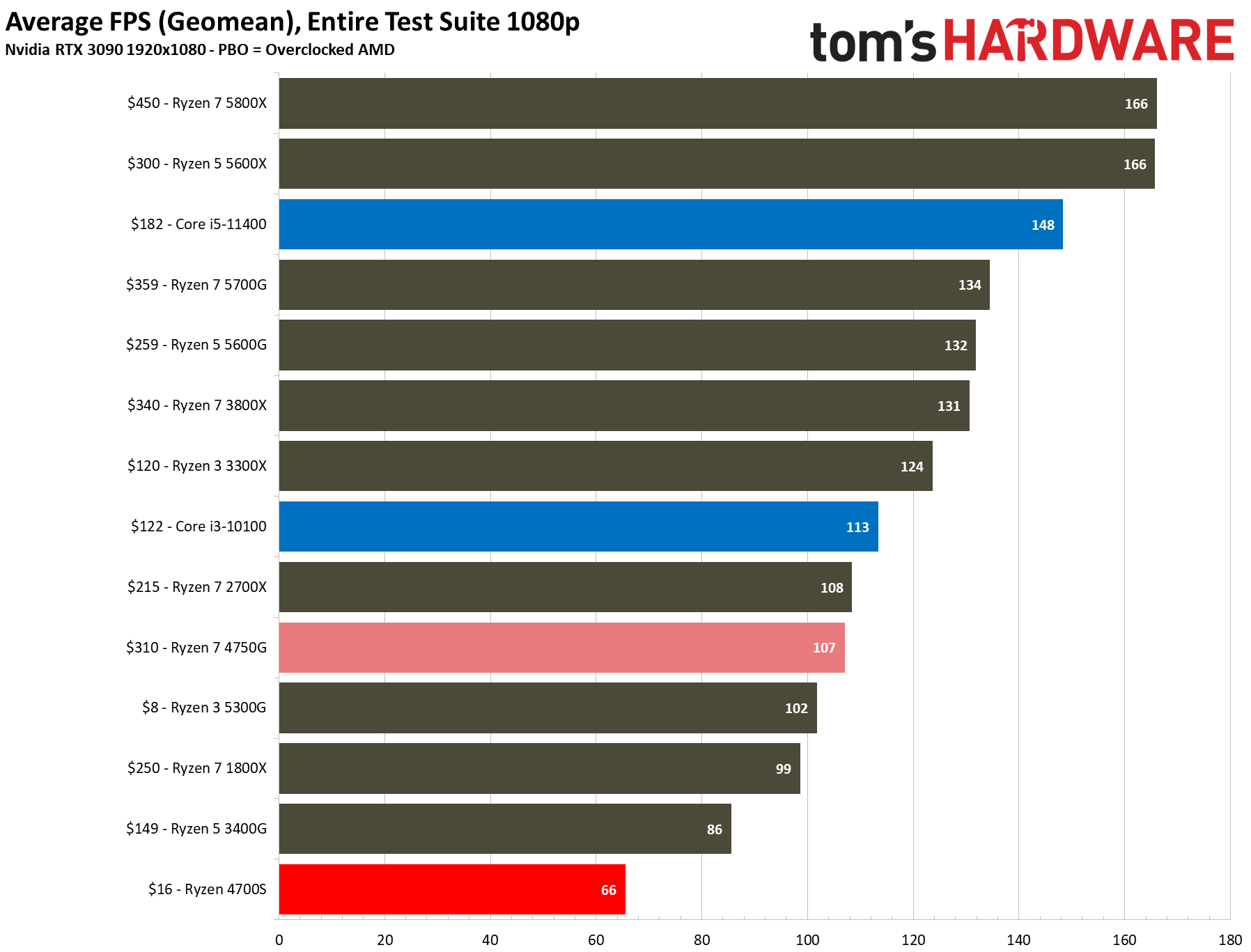
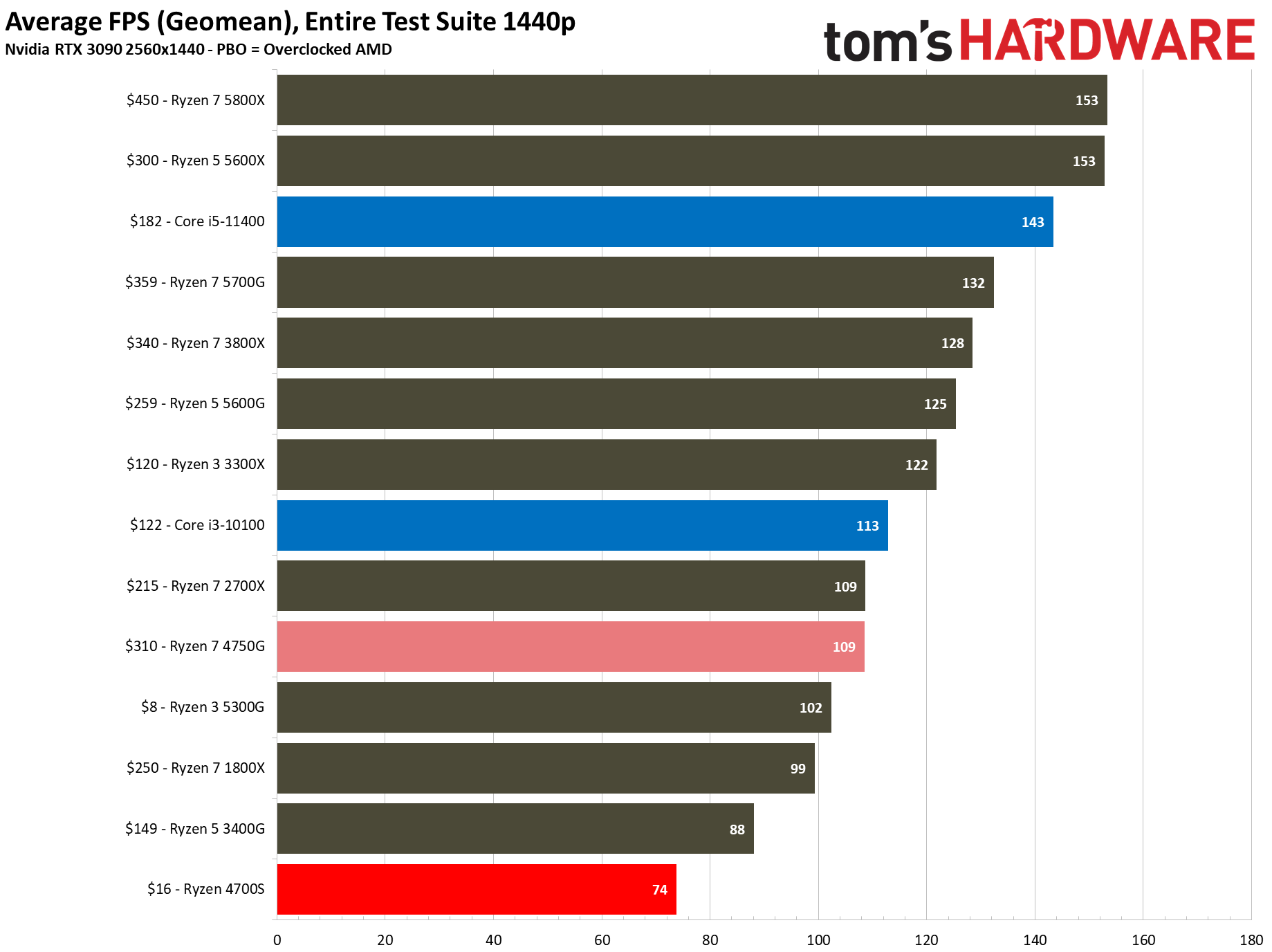
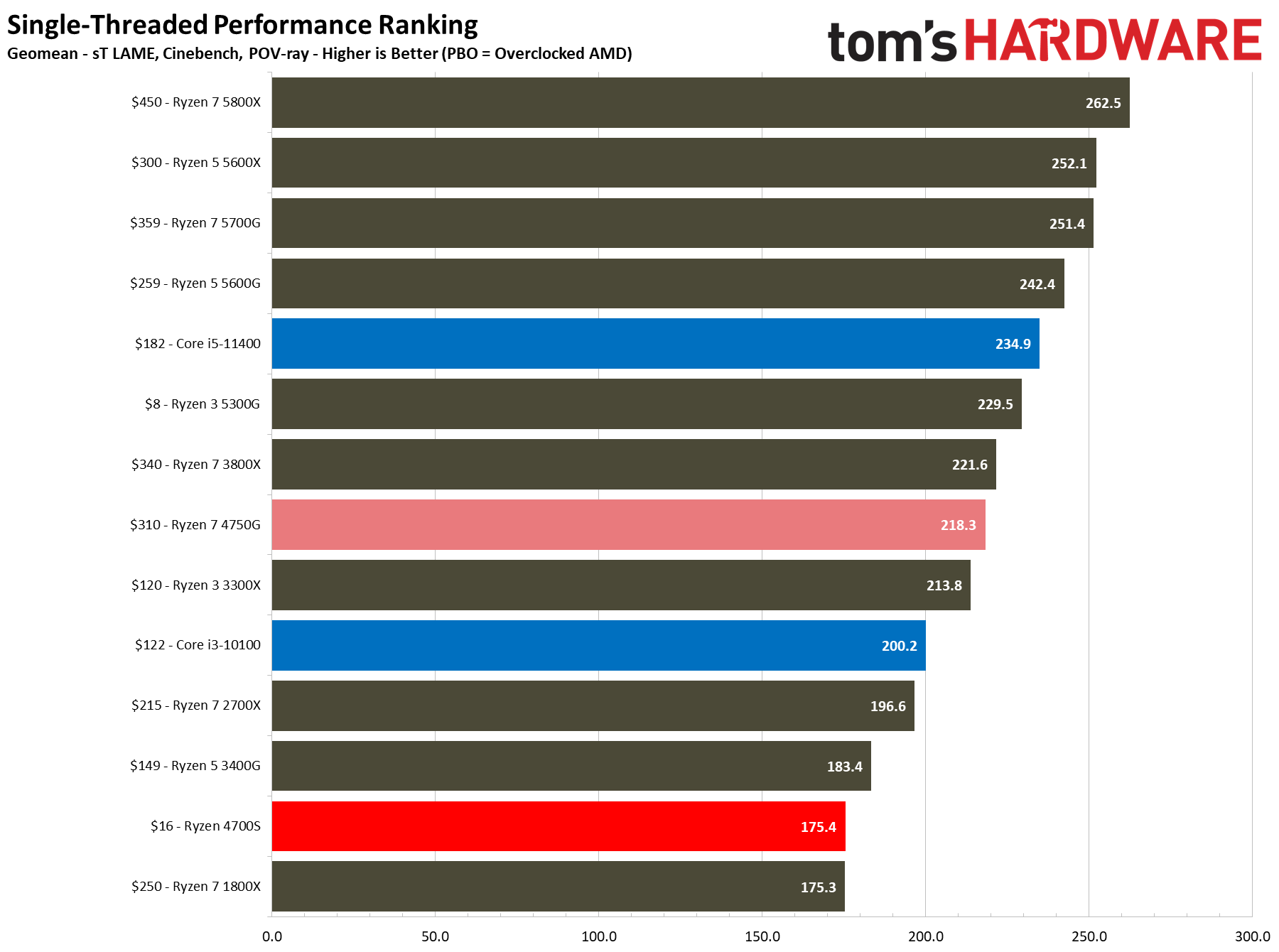
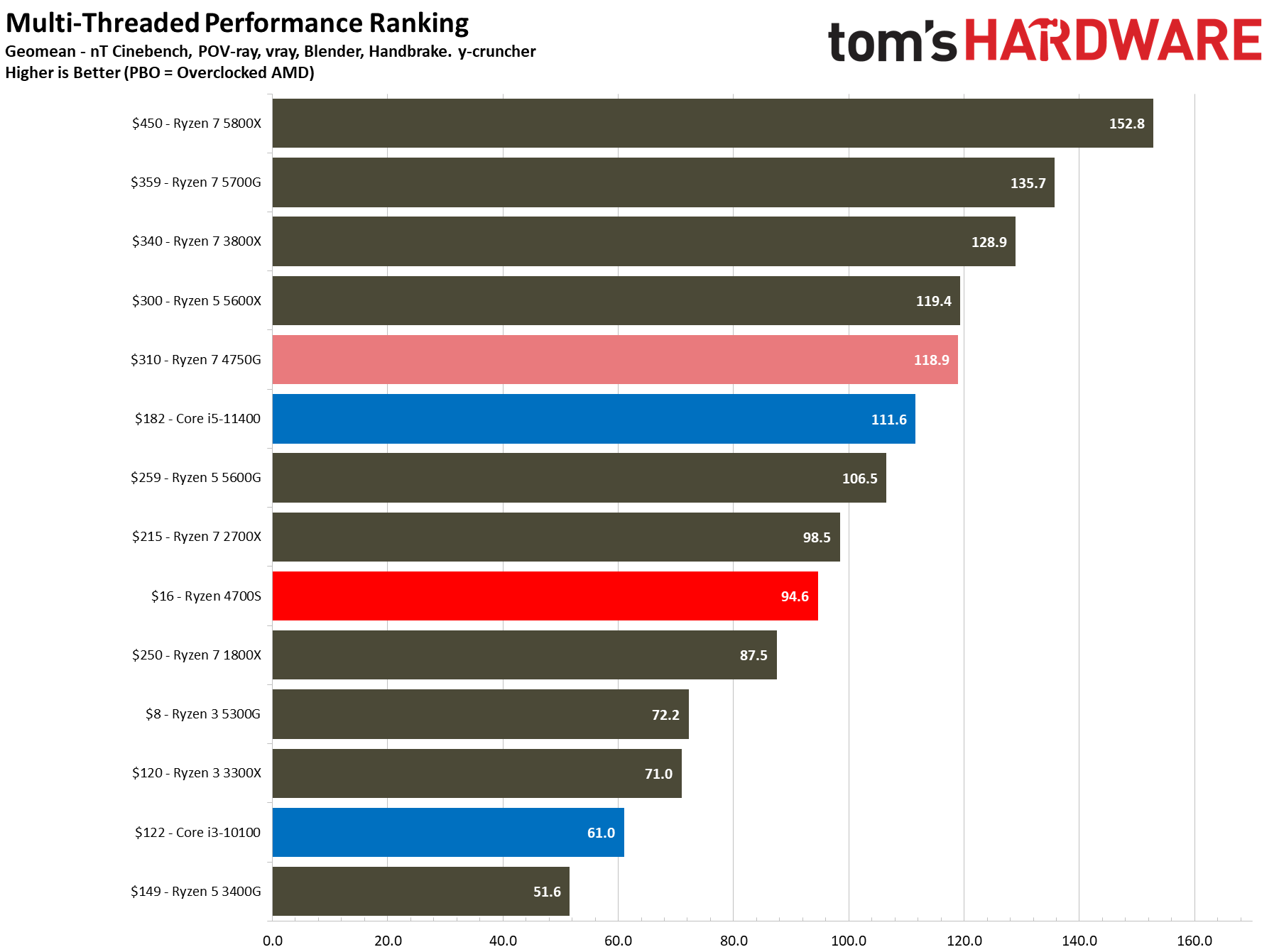
We'll go over the various benchmarks behind these cumulative results in great depth on the following pages, but these slides provide a quick summation of our test results. The first two slides show gaming performance, while the final two slides show performance in both single- and multi-threaded applications.
Be sure to hit the following pages for targeted tests that help explain why we see such low performance in gaming and single-threaded tasks. We also have a more in-depth look at the benchmark results and test methodology as well as a final section with our overall analysis.
First, let's take a trip on the following pages through the system we bought from a Chinese retail shop, and then run through the benchmarks.
- MORE: Best CPUs for Gaming
- MORE: CPU Benchmark Hierarchy
- MORE: AMD vs Intel
- MORE: All CPUs Content
Current page: Resurrected Silicon
Next Page Inside the AMD Ryzen 4700S Desktop Kit System
Paul Alcorn is the Managing Editor: News and Emerging Tech for Tom's Hardware US. He also writes news and reviews on CPUs, storage, and enterprise hardware.